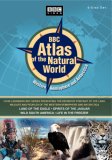| Reviews & Columns |
|
Reviews DVD TV on DVD Blu-ray 4K UHD International DVDs In Theaters Reviews by Studio Video Games Features Collector Series DVDs Easter Egg Database Interviews DVD Talk Radio Feature Articles Columns Anime Talk DVD Savant Horror DVDs The M.O.D. Squad Art House HD Talk Silent DVD
|
DVD Talk Forum |
|
|
| Resources |
|
DVD Price Search Customer Service #'s RCE Info Links |
|
Columns
|
|
|
BBC Atlas of the Natural World: Western Hemisphere and Antarctica
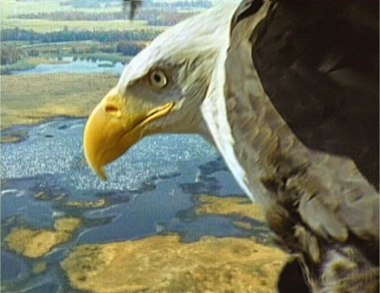
As far as geographical documentaries go, the BBC's Natural History unit is easily one of the top contributors. Over the past few decades, they've produced a critically and commercially successful compendium of programs that cover the globe in great detail. For the most part, the format of these programs isn't anything new; more often than not, it's presented in a standard, slightly distant narrative style. There are exceptions of course, such as 1993's Life in the Freezer---an Antarctic expedition, hosted on location by David Attenborough---and the earlier Land of the Eagle, in which typical narrative is largely replaced by a collage-style presentation.
It's taken roughly 15 years for some of this material to make its way to DVD, but BBC's Atlas of the Natural World: Western Hemisphere and Antarctica covers nearly half of the planet in four separate mini-series that aired between 1991 and 2006. Beginning in North America and traveling gradually southward, this six-disc collection offers a painstaking amount of information condensed into easily digested episodes. As the previously mentioned Life in the Freezer and Land of the Eagle are on board, the overall narrative style is divided fairly evenly. Quality and effort aside, I usually prefer the more distanced approach to such documentaries---and though Life in the Freezer contains an amazing amount of detail, it's a bit awkward seeing an enthusiastic human standing before a backdrop of confused penguins.
Spread over one and two-disc groups, these four excellent programs offer something for everyone, from giant otters to cringe-inducing groups of fire ants and other dangerous insects. From start to finish, the animal kill count is catastrophic: these documentaries focus squarely on the natural order of things, from the food chain to annual weather patterns that routinely change the landscape and population. Starting from the north, let's take a look at what's included here:
(8 episodes on 2 discs, 48 minutes each)
Includes "The Great Encounter", "Confronting the Wilderness", "Conquering the Swamps", "Across the Sea of Grass",
"Into the Shining Mountains", "Living on the Edge", "The First and Last Frontier" and "Searching for Paradise".
Broken into eight parts, Land of the Eagle is perhaps the most detailed of the four---and believe me, that's saying something. This poignant 1991 mini-series deals with the land, wildlife and people of North America, from the European "discovery" of the land onward. Told from the perspective of both European settlers and Native Americans, Land of the Eagle paints a detailed collage using artwork, photographs, wildlife footage and music---often times, older songs played on instruments of the era---to show how profoundly the land has changed over time. From the mysterious, failed 16th century Roanoke settlement to 19th century railroad development and beyond, the underlying focus of Land of the Eagle is still how nature has been affected. For these reasons, it's an especially moving (and mildly depressing) experience, but an absolute must-see for lovers of natural history. At roughly 400 minutes in length, Land of the Eagle is almost overwhelming in scope but certainly worth the time and attention. (Overall rating: 4.5 / 5)
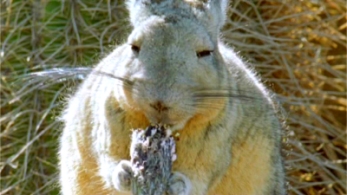
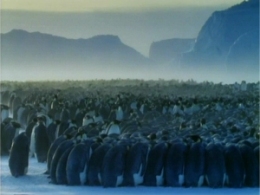
(4 episodes, 48 minutes each)
Includes "The Forging of a New World", "Forests of the Maya", "Hunters of the Caribbean Sea" and "The Fifth World of the Aztecs".
Though it's a bit shorter in length, there's no denying that Spirits of the Jaguar is a fine documentary in its own right. Directed by Mark Jacobs and narrated by Alan Ereira (The Crusades), this journey into Central America and the Caribbean features stunning visuals in a more tropical setting. Again, it focuses largely on natural order and the effect humankind has had on the landscape, including the Maya, Taino, and Aztec peoples. At just over three hours in length, Spirits of the Jaguar still has plenty of time to unfold, shedding light on countless varieties of wildlife and plants. Presented in a more traditional style than Land of the Eagle (due mostly in part to the overdubbed narration and structure), this 2006 mini-series is a worthy addition to the collection. (Overall rating: 4 / 5)
(6 episodes, 48 minutes each)
Includes "Lost Worlds", "Mighty Amazon", "The Great Plains", "The Andes", "Amazon Jungle" and "Penguin Shores".
Venturing even further south, Wild South America takes us from the impressive tropical climate of the Amazon to the colder Antarctic regions of the southern tip. Narrated by Fergal Keane, this 2005 expedition is perhaps the most well-balanced of the four documentaries, presented in a similar style to Spirits of the Jaguar but slightly richer in detail. The Amazon and Andes regions are perhaps the most stunning: as for the former, yearly rainfall literally changes the entire landscape, paving the way for a dramatic shift in the animal population. Life the Central American journey, Wild South America uncovers plenty of exotic creatures and plant life (thanks in part to the use of night-vision and infrared cameras), including loads of dangerous insects and flesh-eating fish. Amazingly enough, a small local population exists in the rugged environment, depending solely on the river for their travel and trade. An absolute must-see for nature lovers, Wild South America is rich in detail and broad in scope. (Overall rating: 4.5 / 5)
(6 episodes, 29 minutes each)
Includes "The Bountiful Sea", "The Ice Retreats", "The Race to Breed", "The Door Closes", "The Big Freeze" and "Footsteps in the Snow".
Though it's the shortest of the bunch, Life in the Freezer gets by on the dedication of its cast and crew alone. This six-part 1993 series follows host David Attenborough and the crew on a three-year journey in the cold, gray heart of Antarctica, where they encounter millions of penguins, half the world's seal population and much more. Focusing on the animals' commitment to sheer survival---much like March of the Penguins, but in greater detail---Life in the Freezer shows us the inhospitable, ever-changing landscape as never seen before. Attenborough is on-camera most of the time, providing us with a more personal presentation of such a bleak atmosphere---and though it might've been preferable for him to take a back seat more often, Life in the Freezer is still a compelling portrait in its own right. (Overall rating: 4.25 / 5)
Atlas of the Natural World: Western Hemisphere and Antarctica collects these four excellent documentaries in one handy, almost intimidating package, though they're available separately if you'd rather pick and choose. The DVD presentation by BBC Video offers adequate support of the main features, though the technical presentation has a few mild drawbacks and the extras are fairly light. Even with the hefty price tag, though, this premiere installment of Atlas of the Natural World is certainly worth watching for nature lovers and documentary fans alike.
Presented in their original aspect ratios of 1.33:1 (Land of the Eagle, Spirits of the Jaguar, Life in the Freezer) and 1.78:1 anamorphic widescreen (Wild South America), the only major nitpick with this release is a lack of progressive encoding. Whether this was from an improper NTSC-PAL conversion or otherwise, it causes mild blurring during scenes of action and is moderately distracting. Otherwise, this six-disc collection boasts a clean picture with accurate colors---and though a portion of the location footage is a bit on the soft side, the extreme conditions are most likely to blame.
The audio for all four programs has been presented in standard Dolby Digital 2.0 Stereo (in English or Spanish) and gets the job done, as the music and narration come through very clearly. No subtitles have been included, though Closed Captioning is available for the deaf and hard of hearing.
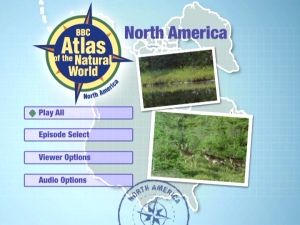
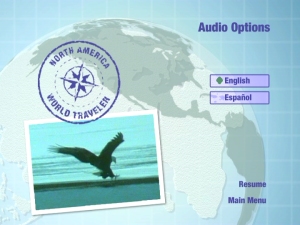
Well-rounded, informative and incredibly detailed, BBC's Atlas of the Natural World: Western Hemisphere and Antarctica is an excellent package that documentary fans will really enjoy. Though the sheer volume of content is intimidating as a whole, the stand-alone format of each shorter episode makes everything much easier to swallow. BBC's DVD presentation is good but not excellent, providing a decent technical presentation and an alternate viewing presentation. Nature lovers of all ages will enjoy the exotic, lesser-seen environments, while those who enjoy a slightly more detached, unobtrusive approach to their documentaries should enjoy the presentation style. Overall, Atlas of the Natural World is a worthy collection of material that's certainly worth the high price tag. Firmly Recommended.
Randy Miller III is an affable office monkey based in Harrisburg, PA. He also does freelance graphic design projects and works in a local gallery. When he's not doing that, he enjoys second-guessing himself and writing things in third person.
|
| Popular Reviews |
| Sponsored Links |
|
|
| Sponsored Links |
|
|
| Release List | Reviews | Shop | Newsletter | Forum | DVD Giveaways | Blu-Ray | Advertise |
|
Copyright 2024 DVDTalk.com All Rights Reserved. Legal Info, Privacy Policy, Terms of Use,
Manage Preferences,
Your Privacy Choices | |||||||









